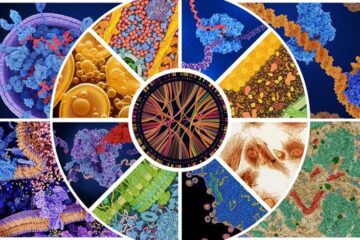New method of oxidising terpenes holds exciting possibilities for perfumery, flavouring and pharmaceuticals

Researchers in Oxford University¡¦s Department of Chemistry have devised a new method of selectively oxidising terpenes to produce compounds of particular interest to the perfumery, flavour and pharmaceutical industries.
Terpenes and their derivatives are commonly used in industry to modify flavours and fragrances, and new compounds for trial are continuously needed. The terpenes themselves are not of commercial interest, but rather the derivatives that commonly require stereoselective functionalisation at allylic as well as non-activated C-H bonds of the parent terpene. This is one of the most difficult reactions to carry out by conventional reactions since the highly reactive chemical oxidising agents are typically non-selective.
In the Oxford laboratory, considerable excitement is centred on the capability of introducing hydroxyl groups into specific sites in the molecule with a high degree of stereoselectivity. The researchers have developed a method of oxidising terpenes, or other hydrocarbons of interest, by enzymatic techniques. Indeed, non-activated C-H groups can be targeted. Typically, the oxidation produces high yields of relatively pure compounds.
The enzymes of particular interest are specific mutants of haem-containing enzymes, especially mutants of P450. Currently the mutant enzymes are expressed in E. coli as a host to produce an in vivo oxidation system which can be scaled up to large volumes. Initial work has demonstrated the oxidation of R-limonene to (+)-isopiperitenol or (+)-carveol depending on the enzyme and mutant, camphor to 5-exo-hydroxycamphor, (+)-Ą-pinene to (+)-verbenol and valencene to nootkatone.
Isis Innovation, Oxford University¡¦s technology transfer company, is actively seeking partners for the licensing and commercial development of this promising technology.
Media Contact
More Information:
http://www.isis-innovation.comAll latest news from the category: Life Sciences and Chemistry
Articles and reports from the Life Sciences and chemistry area deal with applied and basic research into modern biology, chemistry and human medicine.
Valuable information can be found on a range of life sciences fields including bacteriology, biochemistry, bionics, bioinformatics, biophysics, biotechnology, genetics, geobotany, human biology, marine biology, microbiology, molecular biology, cellular biology, zoology, bioinorganic chemistry, microchemistry and environmental chemistry.
Newest articles

A universal framework for spatial biology
SpatialData is a freely accessible tool to unify and integrate data from different omics technologies accounting for spatial information, which can provide holistic insights into health and disease. Biological processes…

How complex biological processes arise
A $20 million grant from the U.S. National Science Foundation (NSF) will support the establishment and operation of the National Synthesis Center for Emergence in the Molecular and Cellular Sciences (NCEMS) at…

Airborne single-photon lidar system achieves high-resolution 3D imaging
Compact, low-power system opens doors for photon-efficient drone and satellite-based environmental monitoring and mapping. Researchers have developed a compact and lightweight single-photon airborne lidar system that can acquire high-resolution 3D…





















